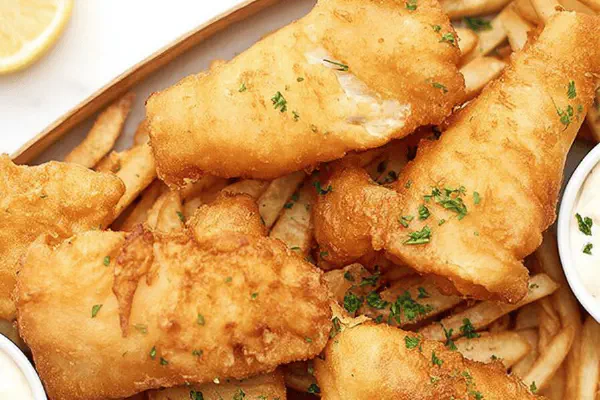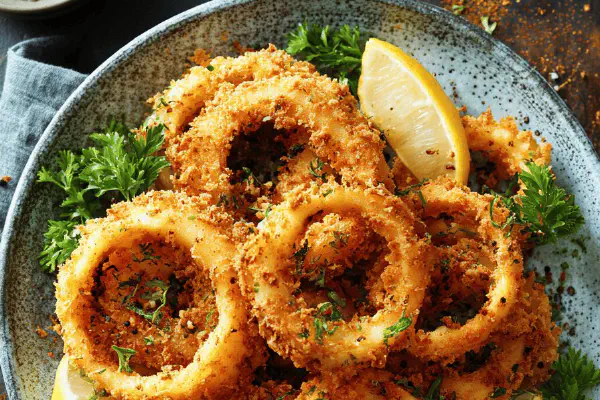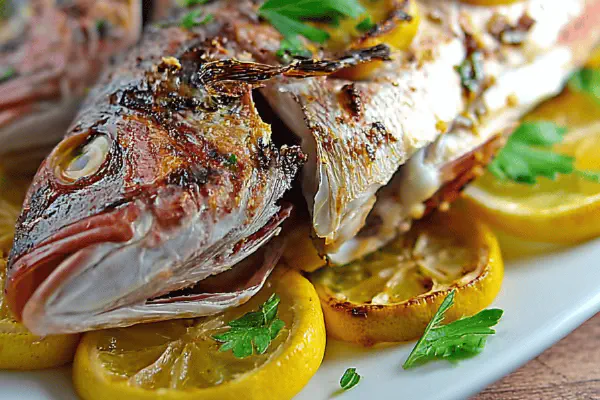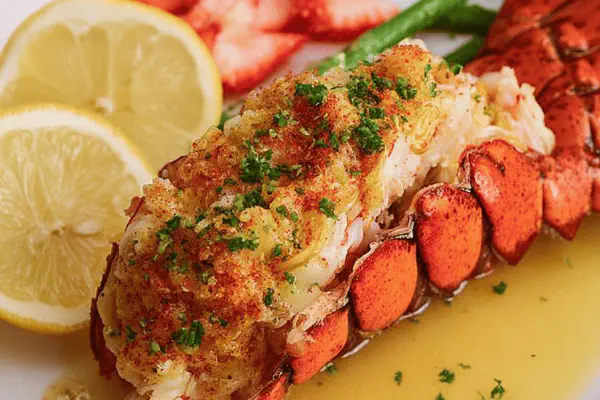Beer Battered Fish Fry
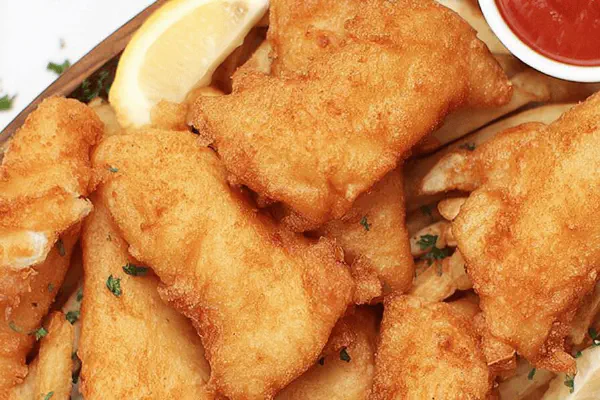
By Emma
Certified Culinary Professional
Ingredients
- 2 quarts vegetable oil
- 22 ounces cod fish fillets cut into bite pieces
- 1 1/8 cups all-purpose flour divided
- 1 tablespoon garlic powder
- 1 tablespoon smoked paprika
- 2 teaspoons kosher salt
- 2 teaspoons freshly ground black pepper
- 3/4 teaspoon baking powder
- 1 large egg
- 11 ounces light lager or pilsner beer chilled
About the ingredients
Method
- Heat oil in deep fry thermometer monitored vessel to 345 to 355 degrees F depending on stove quirks. Cast iron or dutch oven works.
- Rinse cod, pat completely dry with paper towels. Cut smaller pieces for uniform cooking, about 3 inch chunks. Whole or large chunks dry poorly and can steam inside.
- Mix most flour with garlic powder, smoked paprika, salt, pepper, and baking powder in wide shallow dish. Whisk in egg until crumbly paste forms.
- Slowly pour chilled beer in thin stream while stirring. Stop adding when batter is pourable but thick enough to coat fish heavily without sliding off instantly.
- Dredge fish chunks in reserved 1/8 cup flour lightly. Dust off excess. This dusting helps batter stick.
- Dip each floured piece into batter quickly, letting excess drip back.
- Carefully drop battered pieces, one by one, into hot oil, avoid overcrowding. Keep a spider or slotted spoon handy.
- Listen for crisp sizzling bubbles, oil should roar softly but not smoke. Stir occasionally to prevent sticking or clumping.
- Turn fish halfway through cooking to brown all sides, about 3 to 4 minutes total but mostly judge when crust is golden darkened with no raw batter spots.
- Remove with slotted spoon onto wire rack above rimmed sheet pan to drain dry and stay crispy. Oven preheated to 160 degrees F keeps cooked fish warm.
- Repeat with remaining fish. If oil temp drops too low, wait for it to return before frying next batch or batter will soak oil and get greasy.
- Serve immediately or keep loosely covered to avoid moisture buildup. Hot sauce or tartar sauce optional, lemon wedges always recommended.
Cooking tips
Chef's notes
- 💡 Oil temp crucial. Too hot batter burns fast. Too cool oil soaks batter, greasy mess. Use thermometer. 345 to 355 degrees F hits silky crust, crackling sound signals heat right. If bubbles die down, oil temp dropped—wait before next batch.
- 💡 Flour division saves batter sticking. Coat fish in reserved flour first gently. Dust off excess. Creates dry surface. Batter grips better. Skip this step, batter slides off, ruins texture. Smaller pieces cook evenly. Whole big chunks trap steam, soggy inside, dry outside.
- 💡 Beat egg lightly, then stir in beer slow into dry flour mix. Thin stream, whisk constantly. Batter thickness varies by beer carbonation, flour type. Test by coating fish, batter should cling but not drip instantly. If too thin, add tiny flour bit sparingly, not quick fix.
- 💡 Listen for sizzle, oil roar soft but not smoking. Hard crackle means temp spike, burns outside. Turn fish gently mid fry, 3-4 min total. Golden dark crust signals done. Raw batter globs visible need more time. Fork poke fish, flakes gently separate if ready.
- 💡 Keep cooked fish warm on wire rack above sheet pan in 160 F oven. Avoid paper towels—traps steam, sogginess. Wire rack lets air circulate, crust stays crisp longer. Avoid crowded batches in fryer. Drops oil temp quicker, soggy coating, slow cooking. Patience matters.
Common questions
How to avoid soggy batter?
Oil temp most critical. Fry small batches. Wait for oil to regain heat. Flouring fish first helps batter stick. Wire rack draining avoids steam buildup. Pat dry fish thoroughly. Skip paper towel resting, ruins crunch.
Can I use other fish?
Yep. Haddock, pollock work well too. Firm white fish needed. Oily fish messes with batter consistency. Adjust cut size for uniform cooking. Dry fish completely before flouring. Try alternatives if cod unavailable or pricey.
What if batter falls off?
Coat fish in flour first. Dust excess. Batter sticks better to dry surface. Check batter consistency. Too thin slips off. Oil temp off? Cooler oil makes batter absorb more oil, falls off easily. Also avoid overcrowding in pan.
How to store leftovers?
Refrigerate in airtight container. Reheat in oven on wire rack to keep crisp. Microwave softens crust fast. Can freeze fried fish separately, but texture degrades. Best eaten fresh but proper reheating salvages some crunch.
